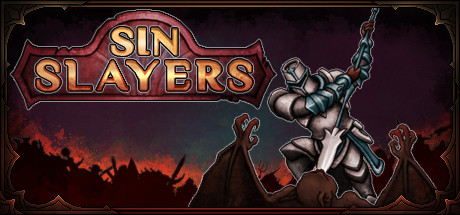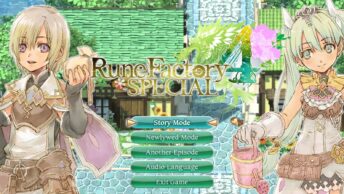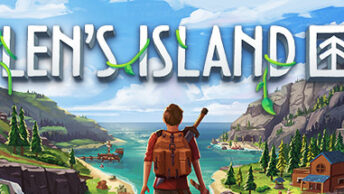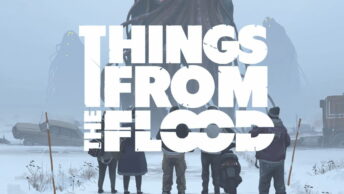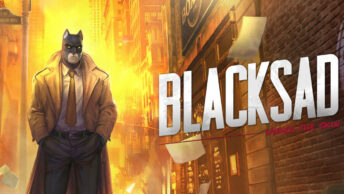A dungeon crawler RPG with turn-based combat where your goal is to assemble a team and to hunt down each of the 7 deadly sins that are plaguing the land.
Type: Single-player
Genre: RPG, Turn-based, Strategy,
Dungeon Crawler
Developer: goonswarm
Publisher: Black Tower Entertainment
Release Date: 5 Sep, 2019

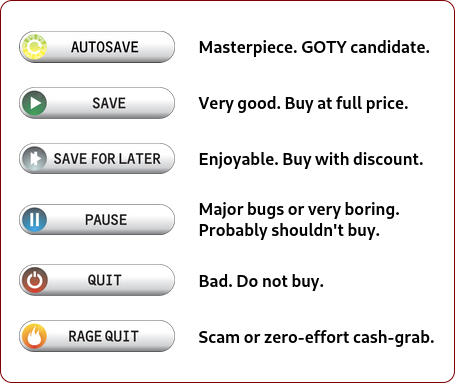
The Premise
Sin Slayers is a game with a somewhat familiar concept – to face and defeat the 7 deadly sins. However, it takes that familiar concept and gives it its own spin. We are in a land completely dominated by the Sin Lords, and each of them has its own domain. A small group of rebels bands together in a little church and they begin building their force in order to bring down the Sin Lords one by one and to free the land from their influence.
The task is not an easy one, as the Sin Lords have hordes of monsters and possessed humans on their side, as well as trap-laden dungeons, whereas the rebels are only but a handful of brave fighters and mages, some of which you’ll need to find over the course of the game.
It’s quite noticeable that well-known dungeon crawlers such as the Darkest Dungeon must’ve played a big influence in inspiring this game and its core gameplay.
The Dungeons
So then, each Sin Lord has its own domain, and each domain consists of two procedurally-generated dungeons. The first dungeon in each domain ends when the player finds and defeats a lesser boss (sort of like a right-hand man of the Sin Lord) before unlocking the second dungeon where they will face the Sin Lord himself/herself. Aside from that, the two dungeons in each domain do not differ in any other regard, but the theme of the dungeons varies between one domain and another. For example, Gluttony’s dungeon is a forest, Sloth’s is a graveyard, Greed’s is a mining cave, and so on.
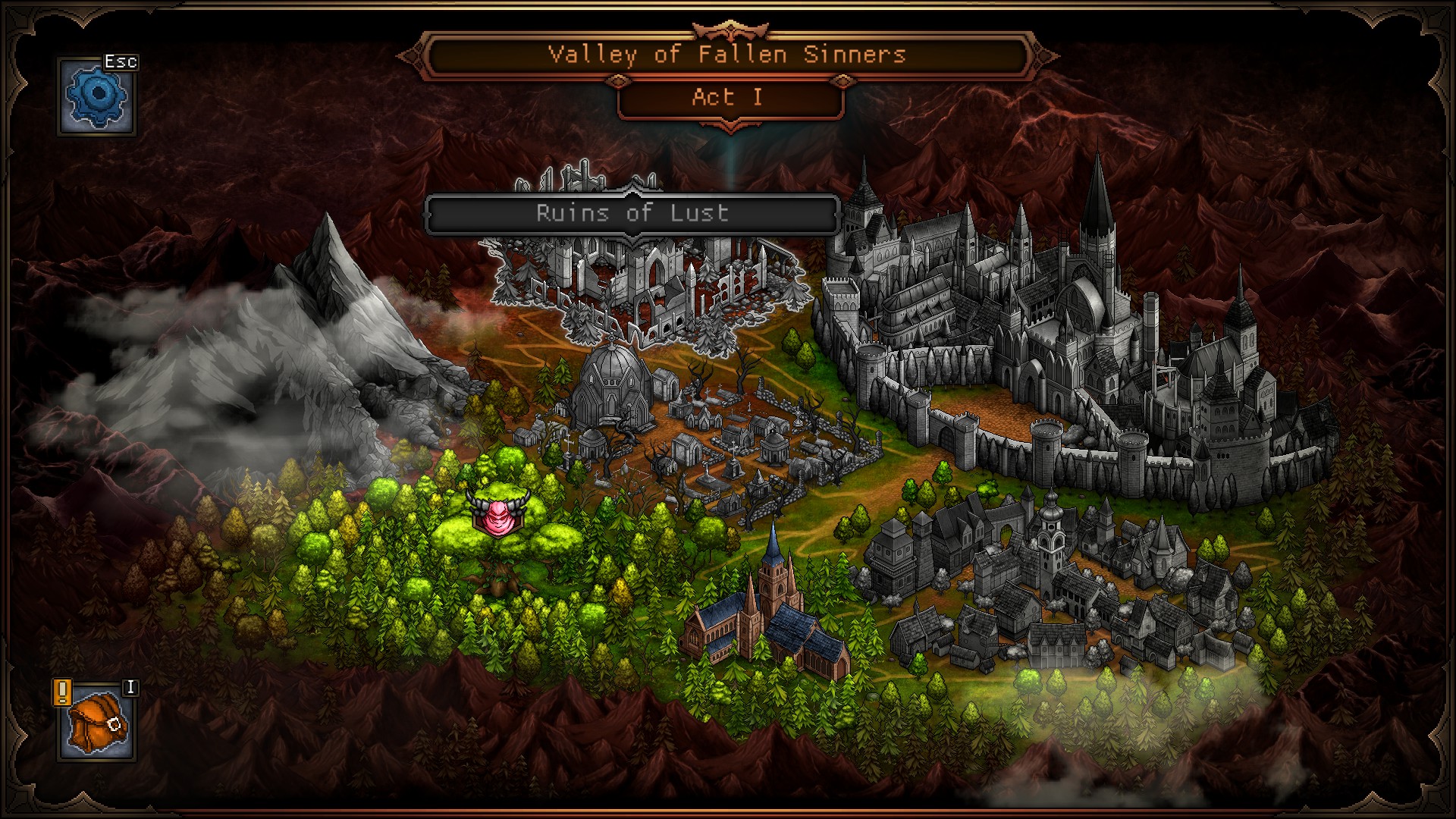
As mentioned previously, when you enter a dungeon, its layout is generated randomly, so if you exit it and come back later, it will be reset and will have a new layout. For this reason, once you’ve entered a dungeon, you have to beat it in order not to lose the progress you’ve made exploring it.
So, it really helps to prepare everything before entering each dungeon – getting all the required items, and also choosing the raiding party. You cannot change your party until you exit a dungeon and return to the church. There is, however, no permadeath here. The party members are treated more like the JRPG heroes whom you can revive once they fall in battle rather than being disposable pawns like in games such as Darkest Dungeon or XCOM. In that regard, the difficulty is much more forgiving.
Points of Interest
As we explore the dungeons, there are numerous points of interest. We do not see them while the dungeon is unexplored, but as we move along the grid, these points of interest are triggered when we touch them and reveal their cell on the grid. Aside from the enemies, which trigger combat, there are various interactive objects, such as healing fountains that restore party HP, altars which you can touch to gain a temporary bonus, traps which you have to disarm (if you have disarming kits available) or risk losing some HP, and also objects that might or might not have useful loot in them, such as sacks, coffins, and corpses of some unlucky people.
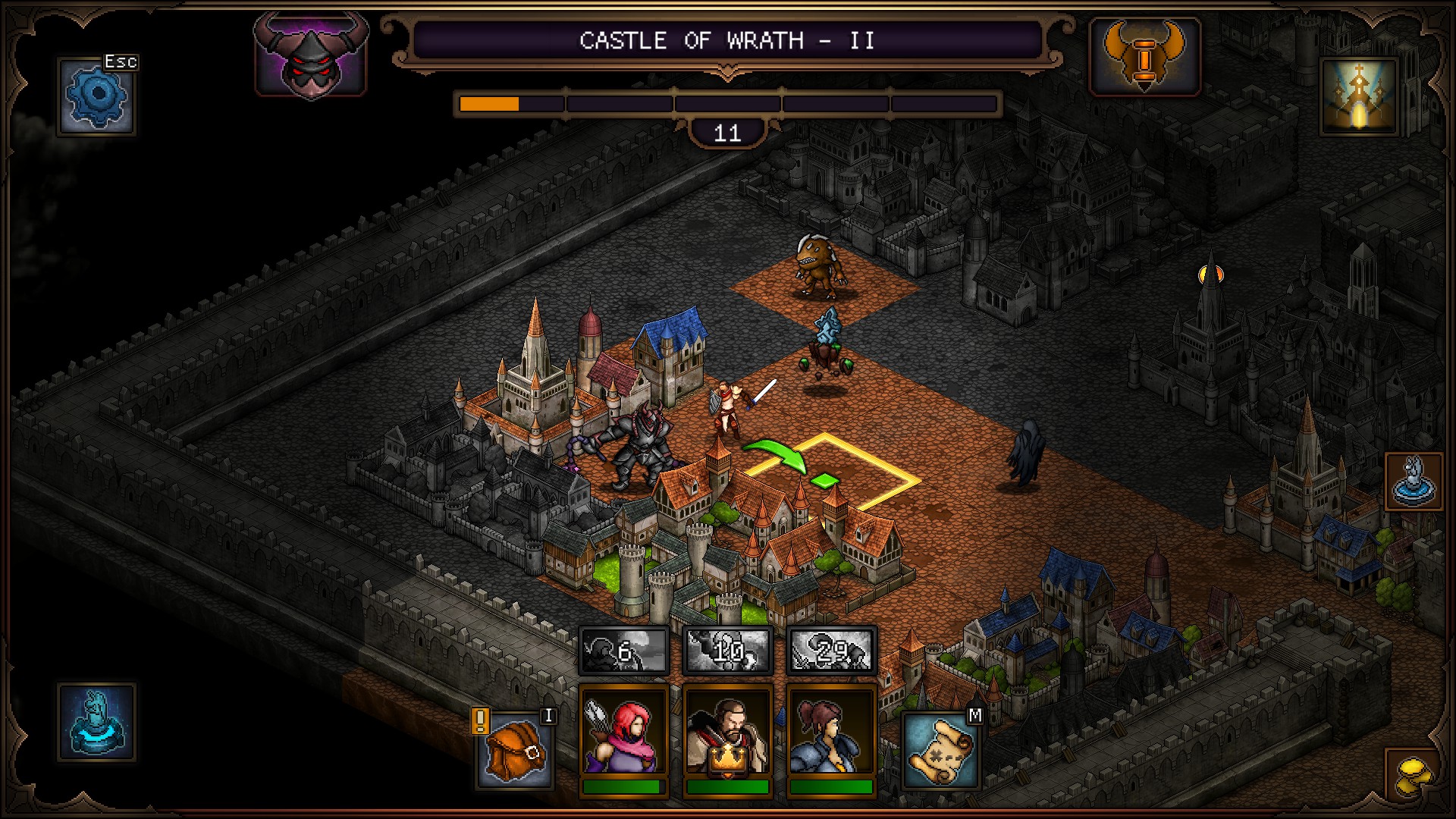
When interacting with many of these objects, a choice is presented to the player – Do you really wish to desecrate this grave or coffin for some treasure? Are you sure you want to rummage through this trash or to touch a dead body that might carry diseases? You may proceed to do that, and you may find some useful items if you do, but this has a cost – it fills up your sin meter. Sin meter measures your degree of corruption. The more you sin within a dungeon, the stronger the enemies in it become. So, as a player, you have to choose if you want to risk busting open every coffin and searching every corpse in your line of sight or if you’d rather not empower your enemies. Choosing not to touch these objects causes the sin meter to decrease slightly, so you can search through some of them and then avoid others in order to keep the level of sin in check.
In addition to these interactive objects, each Sin Lord’s dungeon also has its own rules that could increase your sin level, and these are more thematic in nature. For example, eating food items that restore health in Gluttony’s dungeon will increase your sin, or searching through treasure chests in Greed’s dungeon will do the same.
The dungeons also contain sidequests. Some sidequests are given to us in the church, which we complete in one of the dungeon areas, while others appear randomly in the dungeons. Most sidequests reward us with a bit of loot, while a few others unlock new NPCs in the church, such as a blacksmith or a monster hunter, who help us out or give additional quests.
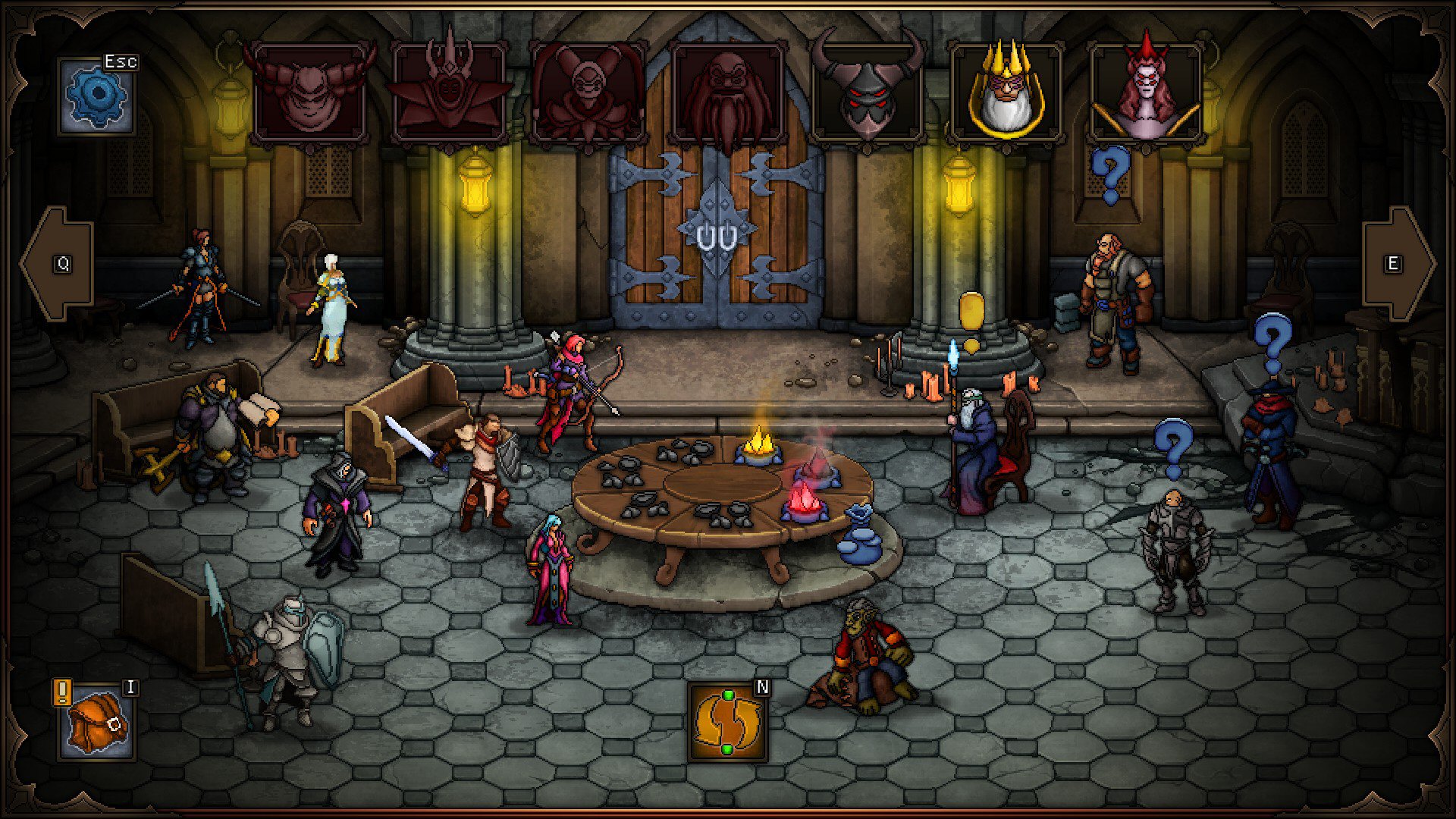
Heroes, Abilities, and Combat
As I’ve briefly mentioned, the heroes do not die permanently, and you will level them up throughout the course of the game. We start with 4 of them (a warrior, a priestess, a huntress, and a protector), but over the course of the game, as we beat the dungeons, we get new additions to the team, some of which require us to complete a sidequest before we can recruit them.
Each hero has their own ability tree, although the number of skills each of them has is somewhat small. This can make a lot of the combat feel quite repetitive, especially in the early stages when the heroes only have a basic attack and one other skill. By later stages, it gets more interesting, as we get a lot of heroes to choose from, and so some experimentation with different parties can be had, as well as some of the skill setups.

Every hero also has a special on-map skill they can use in dungeons. Each one differs and offers a different function. For example, Warrior’s on-map skill reveals points of interest in the surrounding area, Huntress’ on-map skill allows instant escape option before a battle with an enemy even triggers, Protector’s on-map skill gives a party defense buff for several moves. Every skill has a step-count cooldown of course and can’t be used all the time, so players need to decide when best to use them.
The combat is very akin to standard turn-based battles in JRPGs. Your party is on one side of the screen and enemies are on the other. Speed stat determines the move order in a turn, and the goal is to bring every enemy’s HP down to zero.
The positioning of your team matters, however. From the 3 members of your team, one stands at the front. This party member has easy access to every enemy for attack, but is also equally open to each enemy to attack him/her. The ones at the back will have a tactical advantage when attacking enemies on the same side of the battlefield as them but will be disadvantaged if attacking an enemy on the diagonally opposite side.
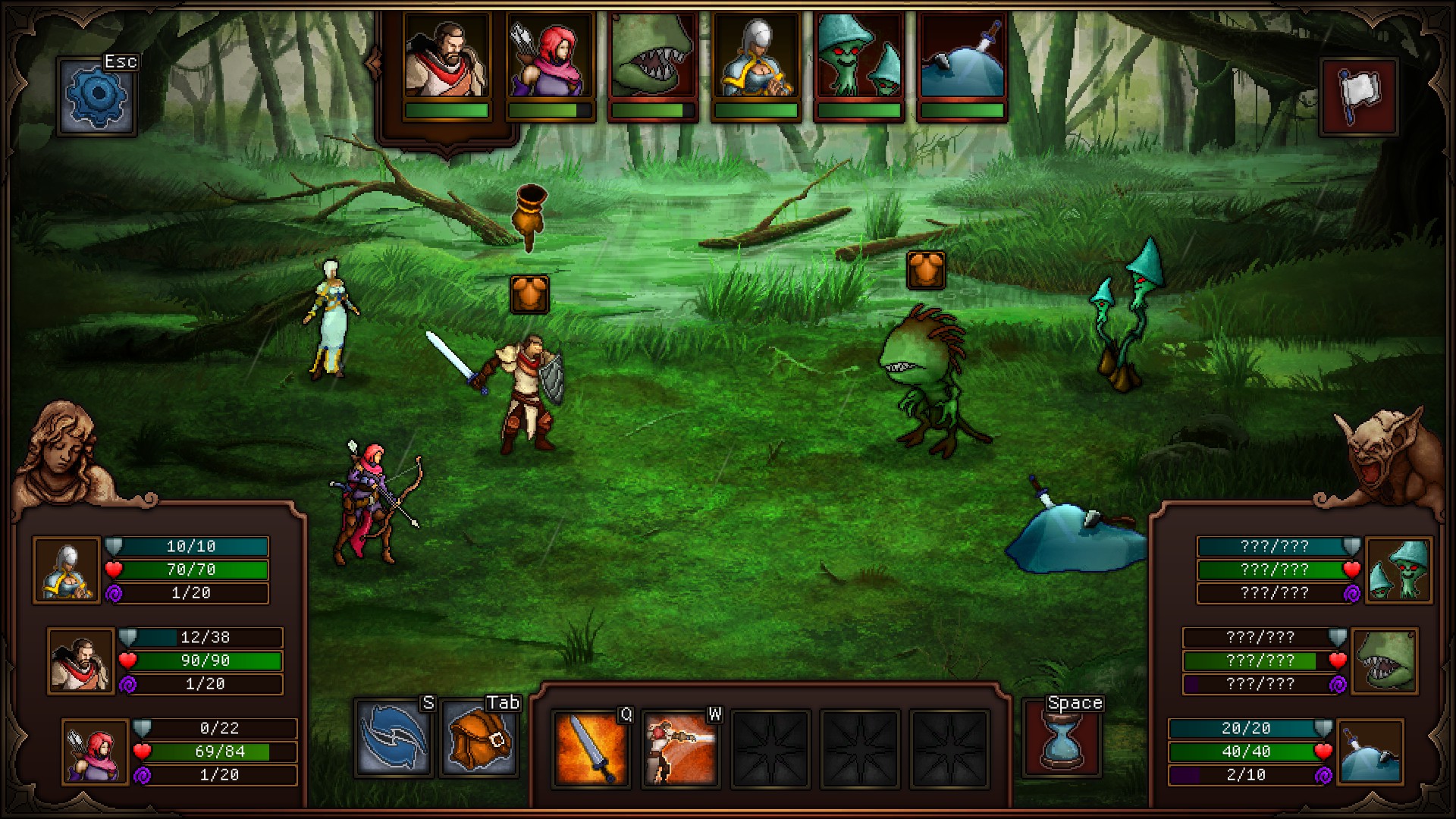
There is a variety of enemies that can be fought in dungeons. Some enemies seem to be universal and appear in every dungeon, while others only appear in a specific dungeon of their theme. Each enemy monster type has weaknesses and resistances to particular damage types, which you have to discover on your own. Once you’ve fought an enemy, they get entered into the Bestiary, which you can access from your in-game menu to check up on their stats. In this regard, you need to get to know your enemies and choose appropriate party members to face them.
It is fun to discover new enemies and adapting your strategy to them. However, since the sheer number of enemy encounters in dungeons is so big, you’ll often be coming across the same groups of enemies again and again, and it will feel repetitive. Using the same 2-3 skills by each hero makes it feel even more repetitive, and I think in this regard, the game could use some improvement. We do get to unlock each hero’s stronger skills as the game progresses, but those require rage points cost to be used in battle (which build up in each battle as you attack enemies), so for 90% of regular fights, you won’t get to use your strongest abilities and will just be sticking with the same basic moves, making the game feel kind of grindy.
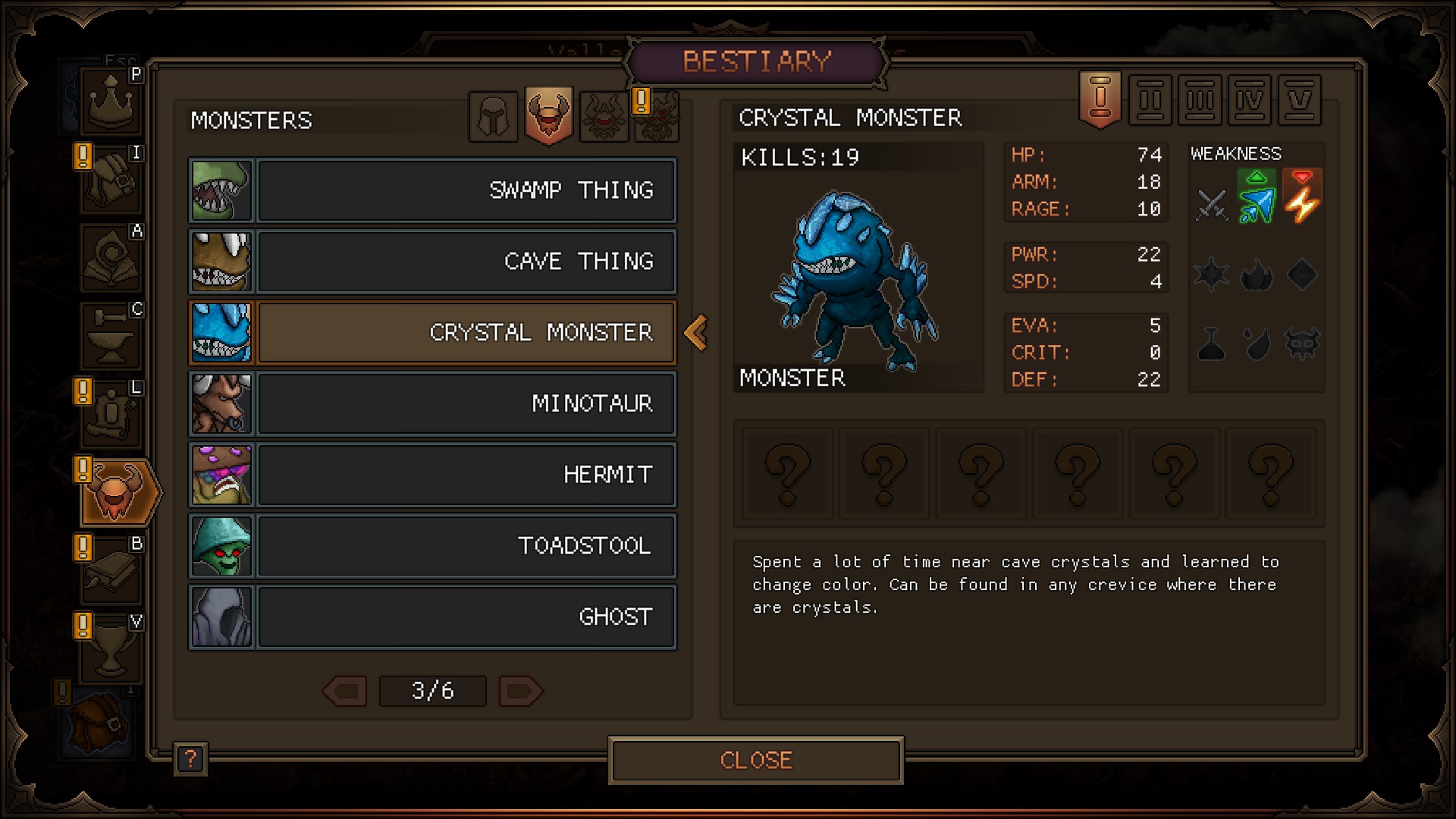
Art and Visual Presentation
The visuals in this game consist of a really stunning pixel art style, reminiscent of the old-school games. The design and animations of each character are excellent and unique, and the environments all look very colorful and interesting, despite the game’s setting being quite dark and gritty in nature. Each Sin Lord’s domain differs from the others, and it’s a pleasure to explore each one. The way each location is executed and enemy art adds to the intrigue of exploring a new dungeon.
Inventory and menu UI is also nicely designed and easy to navigate through. The icons for equipment and abilities all look great and distinct from one another. There are pictures of each monster in the bestiary too, along with the data on them, which get unlocked as the player encounters these enemies.
I personally find these kinds of visuals to be a lot more engaging and to have more of a soul than the standard color-faded photorealistic look of AAA games.
Perhaps one thing that can get a bit annoying in visual presentation are some of the enemy attack animations being a bit longer than necessary. When you grind through numerous battles and have seen some of those animations a million times, you just want the enemies to hurry up a bit. It’s a bit nitpicky, but given how much you engage in combat, it can be a real annoyance to many players.
There are also some very nice-looking monochrome still images during some of the story cutscenes along with a voiceover by a narrator.
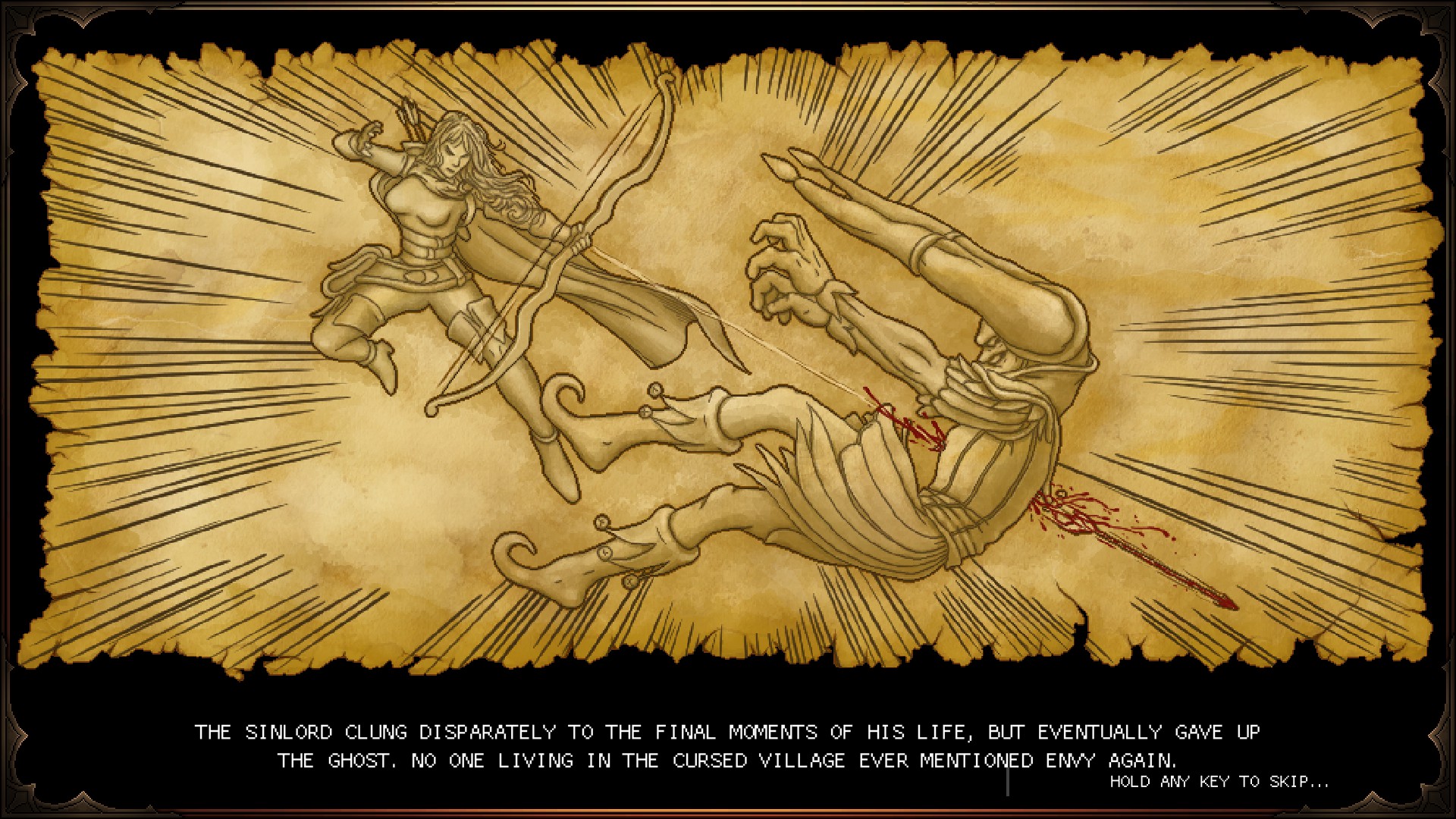
Music and Sound
Music in Sin Slayers is quite splendid and sticks with you, especially the battle tunes. There are about 4-5 different battles tunes, and they give the fights an intense and heroic feel. Even after numerous fights and hearing this music on repeat, I still find it enjoyable. Most of the dungeon exploration tracks were also pretty decent and varied from each other, some being quite peaceful and acoustic, such as the track playing in Village of Envy, while others being a bit more intense and even rocky, like the one playing in Wrath’s domain.
The sound effects were also great. All the gear equipping clicks, in-battle strikes, crafting-related hammer blows, and many others all were well-chosen, and there weren’t any which were annoying.
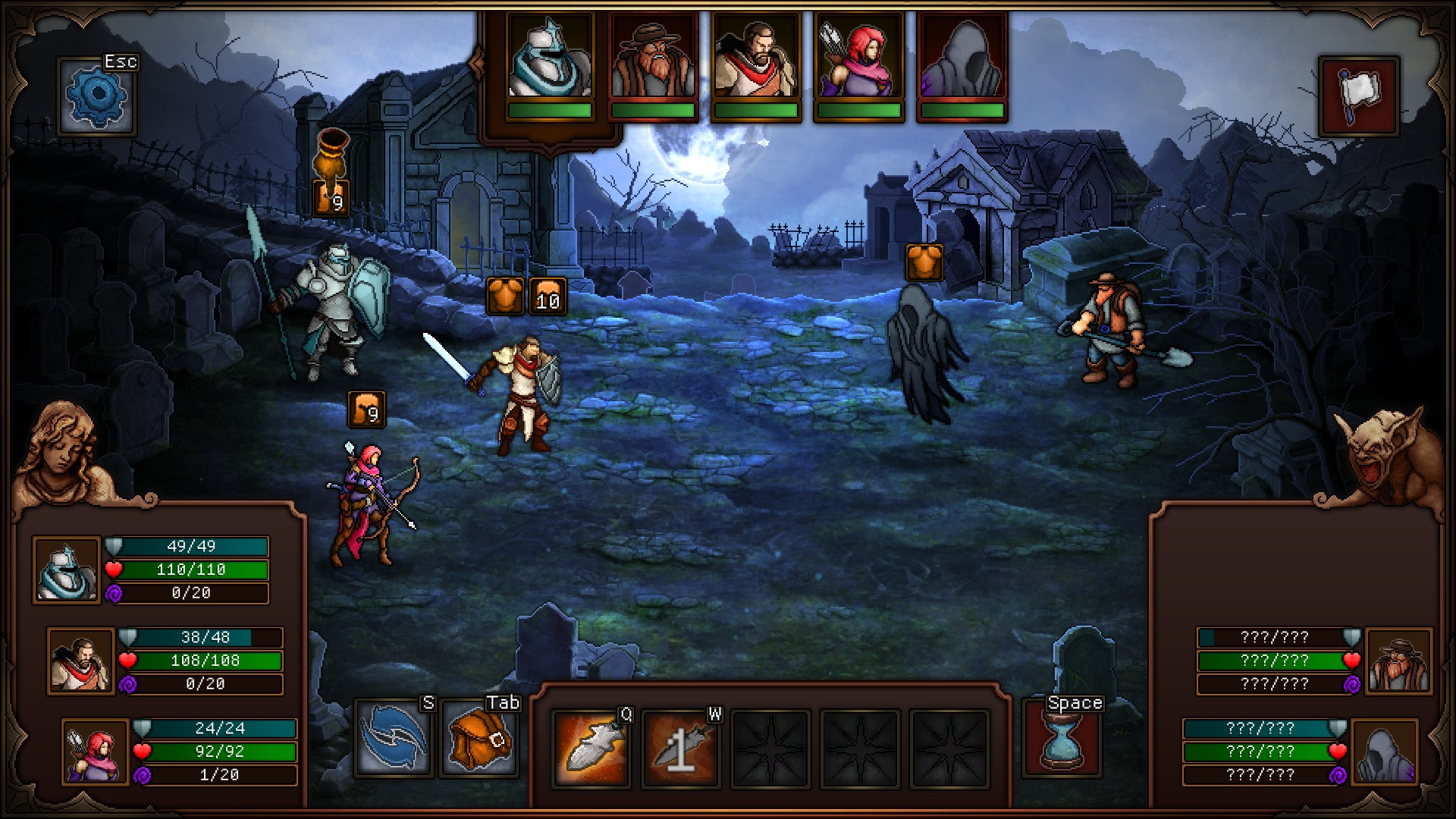
Verdict
Sin Slayers is a really fun and creatively executed dungeon crawler game. Fans of old-school turn-based fighting and old-school visual style should enjoy this title greatly. There are about a dozen or so different heroes to unlock, offering an opportunity to experiment with different party compositions. Each hero also has a variety of skills that can be set as active, so even when choosing the same hero, there’s a variety of strategies that can be tried out.
The main drawback, as mentioned previously, is the repetitiveness of the gameplay. However, repetitiveness is something that’s common to many dungeon crawler games, so to call this a crippling flaw would be unfair for a game of this genre. And besides, it gets more interesting in the latter stages once we’ve unlocked more heroes and can try out different party compositions.
Some of the level grinding can be bypassed with the help of knowledge crystals, which help out greatly when it comes to using newly added heroes, meaning we don’t have to send those heroes out to fight numerous enemies just to level them up. We can simply craft knowledge crystals and use those to get new heroes up to the same level as our already existing heroes. These crystals mainly become available for crafting in mid-to-late stages of the game, as a way to speed up the leveling of new heroes rather than to be used from the start of the game to avoid battles.
The sin meter mechanic is a nice addition and essentially allows us to vary the difficulty of the battles to our liking. And the numerous sidequests spice up our ventures into the dungeon areas and encourage exploration. The presentation is superb, both visually and aurally, and conveys the atmosphere of the setting perfectly, along with a good shot of nostalgia.
So, overall, I think Sin Slayers is a really worthy addition to your collection if you enjoy dungeon crawlers or turn-based battle mechanics of any sort. As a fan of the genre, I’ve given it a ‘Save’ rating. However, if you’re not such a huge fan of the genre, then treat this as a ‘Save for Later’ rating.
Lastly to add, developers have announced plans to keep adding new content to the game in the months to come and they’ve specified what this content will be. New areas to explore, new challenges to face, new heroes to add to our party, and so on. This is great because new content can greatly enrichen the game and keep us coming back to it.

